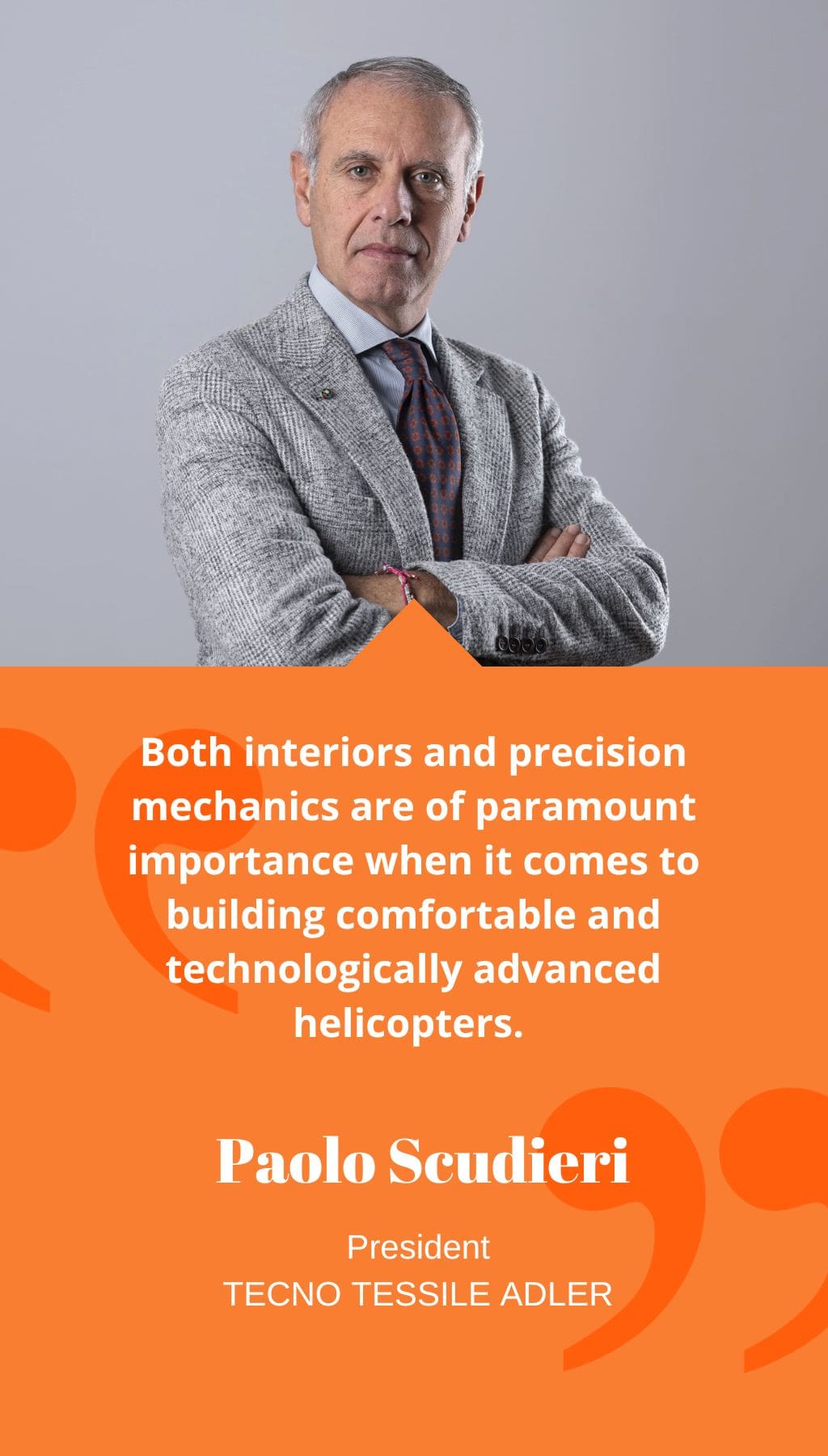
- Italy | 3 April 2018

Could you describe TTA’s work with composites?
TTA is part of a broader group that operates in 22 countries and has 62 plants. Our strategic mission is to combine the automotive and aerospace industries in a single 43,000 square meter plant based in Airola. In Airola, we produce composites both for the automotive sector, such as high-performance vehicles for big companies, and for the aerospace sector. We wanted to combine and merge the most competitive, modern and top-notch modes of production in the automotive sector with the use of composites and light materials specific to the aerospace sector. This combo is the breeding ground for new technologies, new modes of production and assembly, the so-called lean production. We have a philosophy of positive joint collaboration between the two sectors.
Could you describe your work on aircraft interiors and precision mechanics and highlight a few clients?
We focus on both aircraft interiors and precision mechanics. In terms of interiors, we produce the whole range of products, for both helicopters and aircraft. We only use modern infotainment technologies for helicopters, given that they are very demanding. Both interiors and precision mechanics are of paramount importance when it comes to building comfortable and technologically advanced helicopters. In precision mechanics, we produce door systems for ATR and stowage for Boeing involving light materials such as titanium and aluminium.
Is TTA looking for further international growth? Which markets are you considering entering?
TTA is always looking for opportunities to grow and expand into other markets. Our current targets are the USA and Canada. When it comes to helicopters, our largest client is AgustaWestland, the helicopter division of Leonardo. We envision a strategy of future partnerships for growth. Our main focus areas for this are the countries in the Gulf region. Asia has great potential, but obviously, the more consolidated markets are the USA and Brazil, which are also very important both for executives and private helicopters.
There has been a decrease in helicopter production within Leonardo. How has TTA been impacted by this?
The decline was real, but it has not really impacted the group. We have a very diversified line of production, so we are able to counterbalance the negative variations of programming of our various clients. Certainly, these fluctuations, which are tied to the economic development of some countries, affect our company. For example, Brazil caused a decrease in the demand for helicopters. A large company needs to balance out market variations and, even in times of recession, to offer products that can give its clients a competitive edge. This is achievable through a strong collaboration between clients and suppliers. Depending on the economic phase a country is in, the companies operating in that territory may ask for a richer or more humble design from us, but we always try to maintain the efficiency of our products at the forefront.
What is your vision for the company specifically in aeronautics for the next three to five years?
Our objective is to make our products more comfortable for the final clients. We are working on the creation of an aircraft which is a hybrid between a plane and a helicopter. This in-between product combines the benefits and comforts of these two means of transportation. This innovative product is already in the making, and it is something that TTA is helping to develop. It is going to take off vertically and visually it is going to be similar to a Chinook. Innovation is a key factor for our group. We invest 3 to 5% of our turnover into research and development because we believe our products, therefore our clients’ products, have to be constantly improving.














